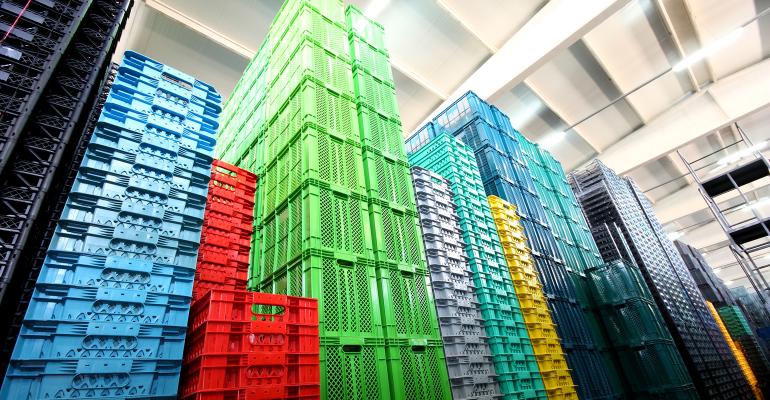
The market for returnable packaging — materials and structures systematically reused within logistics operations — is expected to grow from $98.6 billion in 2022 to $170.93 billion in 2029 with a 6.2% CAGR, according to a recent report from Exactitude Consultancy.
Returnable packaging refers to items that can be recycled or reused throughout the supply chain, such as pallets, crates, intermediate bulk containers (IBC), drums, barrels, racks, dunnage, and bottles
Materials used to manufacture returnable packaging are durably constructed to tolerate weather extremes and rough handling. Materials include wood, plastic, and metal, as well as glass and foam.
According to the report:
- In 2022, pallets were the most prevalent form of returnable packaging, with 57% market share and revenue of $33.84 billion.
- Plastic returnable packaging is expected to experience a 63.4% CAGR during the forecast period, the highest growth rate of all materials.
- The food and beverage industry controlled the largest share of the returnable packaging market in 2022, with 43% share and revenue of $41.58 billion.
Sustainability influences growth in returnable packaging.
Growth drivers for the market will include rising demand for sustainable packaging and governmental regulations supporting environmentally friendly packaging. Because returnable packaging is reused, it is more sustainable than single-use plastic packaging.
Returnable packaging can be part of a circular economy model and minimizes packaging waste, which is a key goal for a growing number of organizations.
A global survey conducted by McKinsey reveals that 66% of business-to-business and industrial companies and 80% of consumer goods companies have made sustainable-packaging commitments. Additionally, 60% of companies claim to be working on recyclable or reusable materials.
Restraints on growth include the high capital expenditure required to install a returnable packaging system. And although the cost per trip is lower for returnable packaging than for single-use packaging, the cost of the return trip adds to operational costs.
Opportunities and challenges in returnable packaging.
Opportunities for providers of returnable packaging are expected to occur in developing economies, where increased urbanization and greater disposable income are fueling consumer demand for durable goods and food/beverage products. Expanded internet availability and ecommerce sales will support ongoing consumer demand.
The long-range economics of returnable packaging, specifically lower operating costs leading to higher profit margins, will contribute to the adoption of returnable packaging in these locations.
A key challenge, however, will be to integrate returnable packaging with existing supply chain logistics. Currently, supply chains are geared to single-use packaging and lack processes for returning packaging to the supplier.
Storage and administration of returnable packaging will need to be simplified and integrated into supply chains to overcome this challenge.
Related Packaging Digest features include Walmart Now Delivers Branded Products in Loop Reusable/Returnable Containers, published October 2022, and Here’s Why You Should Consider Reusable Transport Packaging, published May 2022.







